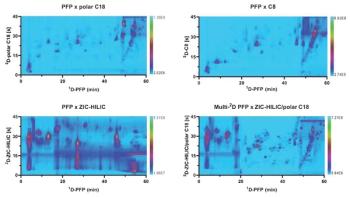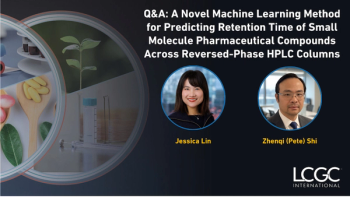
UHPLC–MS/MS With MIP-SPE Sensitively Quantifies Sulfonamides in Milk
A water-resistant, highly adsorptive molecularly imprinted polymer was developed to address the issues of unstable adsorption performance and high organic solvent consumption in traditional materials.
Sulfonamides (SAs) are in wide use as veterinary drugs to prevent and treat diseases and infections caused by bacteria and microorganisms in animals (1). However, their accumulation in humans can prompt health hazards such as damage to the blood system or immune system. Because SAs may get into the food chain via animal-derived foods, specifically milk as reported in a new study out of China, analytical methods with low detection limits are being sought by countries and international organizations to ensure food safety.
The potential risks of SAs in consumed milk include allergic reactions, development of antibiotic resistance, and adverse drug interactions. Allergic individuals may experience hives, itching, or severe reactions. Regulatory limits exist, and proper milk processing minimizes risks. It is important to monitor the levels of SAs in milk products to ensure that measured levels are found well below established maximum residue limits set by regulatory bodies.
Researchers from South China Agricultural University and the Zhongshan Agricultural Product Quality and Safety Inspection Institute have published their findings, in the Journal of Chromatography A, which describe the mechanism and results of a water-resistant, highly adsorptive molecularly imprinted sulfamethazine polymer (MIP) applied as filler for the solid-phase extraction (SPE) of SAs in milk (1). The SAs were then verified and quantified with ultrahigh-pressure liquid chromatography (UHPLC) coupled to tandem mass spectrometry (MS/MS).
In explaining the development of the MIP used for this study, the researchers identified two problems with extraction materials with regard to SAs: low specificity as reflected in the imprinting factor of the molecular imprinting material, and poor adsorption performance of traditional methacrylate imprinting materials in aqueous phase (1). The researchers emphasized that for secondary adsorption, SAs must be extracted into organic solvents, but that that leads to “significant” consumption of those organic solvents in the process.
The MIP the research team devised, they said, showed low background interference plus hydrophobic properties tailored to chemical SA structure. More specifically, this novel, green material applied divinyl benzene as a cross-linker and introduced diallyl amine into the methacrylic acid system, effectively enhancing the imprinting factor five times over (1). The subsequent UHPLC–MS/MS method of analysis was compared and found to be superior to liquid chromatography coupled to mass spectrometry with a GB/T 22966-2008 Chinese charging standard (GB/T–LC–MS).
Low detection limits were seen as necessary for SA analysis in this instance because China, the United States, and the European Union, among others, have established a maximum residue limit of 100 µg/kg for SAs in food products derived from animals (1). For this study, a much lower quantification limit of 0.89 µg/kg was set. Residues of the SA analyte SM2 were found in four out of seven commercially available milk samples, at respective amounts of 7.57, 7.55, 2.93, and 2.10 µg/kg, comfortably above the quantification limit but much lower than the common national and international standards.
Recovery was judged to be steady, at 95.55% to 97.97%, with the rate of the MIP-SPE process remaining above 90% even after five times usage. Precision, the researchers said, was excellent, with a relative standard deviation (RSD) between 0.08% and 2.92%. For these reasons, the combination of MIP-SPE with UHPLC–MS/MS is considered a greener, more accurate, and more easily operable procedure for quantifying SAs in milk compared to previous methods.
Reference
(1) Mo, H.; Li, X.; Zhou, X.; et al. Preparation of bifunctional monomer molecularly imprinted polymer filled solid-phase extraction for sensitivity improvement of quantitative analysis of sulfonamide in milk. J. Chromatogr. A 2023, 1700, 464046. DOI:
Newsletter
Join the global community of analytical scientists who trust LCGC for insights on the latest techniques, trends, and expert solutions in chromatography.




